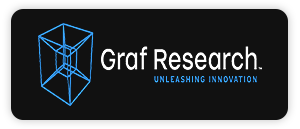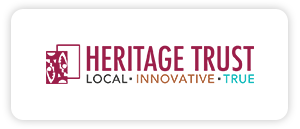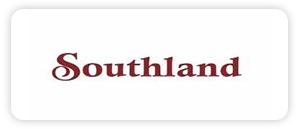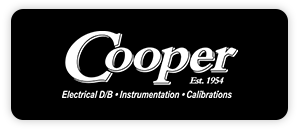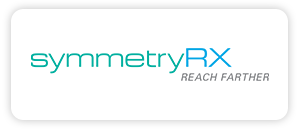Source: Scale Finance Professional Team
The scale and scope of federal and state emergency relief programs during the global COVID-19 crisis is completely unprecedented, as is the crisis itself. Just for starters, $350 billion has been dedicated by the federal government to fund the programs. Note that the top 100 SBA 7a lenders last year only did 7,928 loans over all of 2019 for a grand total of $3.8 billion. In two or three weeks the entire US banking system is now being asked to do almost 100 times that.
Small companies have been flooded with email, text, and Twitter rumors; website links; and one summary write-up after another on outlines of the two major federal programs – Emergency Impact Disaster Loans (EIDL) and Paycheck Protection Program (PPP).
Understandably, the programs’ implementation through the arms of federal government agencies and banks has been an unbelievable challenge given the scale, complexity, entirely new concepts, and urgency. Many small company owners are confused, disillusioned, and still waiting, but loans are being processed and execution progress is being made. Slow, grinding, but forward progress…
For example, the Wells Fargo capacity constraint made headlines and alarmed tens of thousands of business owners. SF CFO Bill Schiffli spent over three hours on Saturday afternoon in a customer support queue trying to get an application submitted on behalf of a mid-size healthcare services client. Bill was assured by his SVP-level, highly experienced Wells banker multiple times on Sunday that the problem in submitting would be solved. Then Wells announced early Monday, April 6, that the bank was no longer accepting applications due to regulatory issues capping their lending capacity.
Our senior Scale Finance team of 35 professionals at CFO and Controller level has been working intensively in the trenches on behalf of small and midsize client companies for several weeks now, as these businesses work extremely hard to survive the crisis.
Here are several lessons learned from our team’s work:
- Organize your data and apply. Some businesses have been paralyzed by hour-to-hour rumors, all the changing “he said – she said”, and fundamental uncertainties as the government has worked with banks to clarify countless details and complexities in these programs. You’re way better off if you ignore all that and simply follow the real-time guidelines available on SBA.gov, follow the guidance of your banker and advisors, and submit a valid and complete application.
- Pursuing both EIDL and PPP in parallel can make sense. Phase 2 federal legislation enabling the Emergency Injury Disaster Loans (EIDL) preceded the phase 3 Coronavirus Aid, Relief, & Economic Security Act (CARES Act) legislation, of which Paycheck Protection Program (PPP) was a major element. Naturally, some businesses focused on EIDL with a sense of urgency beginning on March 30. As it turns out, the basic terms of PPP loans are more attractive in some important ways relative to EIDL loans (e.g. 1.0% interest rate versus 3.75%; no payments for 6 months; up to 100% forgivable versus 0% for EIDL). Moreover, the PPP loan application is a more simple process, and may actually be funded more quickly. Plus, PPP is a first-come, first-served program, so getting in the queue early is important. That said, EIDL has promised to fund a $10,000 Emergency Advance amount within 3 days, followed by up to $2 million in cash with final approval, so the reality of average funding timelines are still not known. Also, EIDL loans can be spent with more flexibility, can be paid over 30 years, or rolled into PPP loans to take advantage of more attractive terms (only for EIDL loans issued through April 3). In the final analysis, there are trade-offs that should be thought through for individual companies and applying for both can make sense in the meantime.
- Ask for help. The complexity of the legislation coupled with high anxiety and ever changing guidance has left even the experts uncertain of the correct steps to take to attain financial relief. Small business owners already have an enormous challenge in caring for their families, employees, business, cash flow and health. Researching and digesting complex and unclear government legislation may be unattainable in these chaotic times. Reach out to your banker, accountant, lawyer or other business owners for guidance. Also, experienced support can help companies stay in compliance with how loan funds can be spent and maximizing forgiveness ultimately.
- Don’t give up. If the first option of financial relief fails, seek out a new option. That might be in the form of finding a new SBA lender due to your bank maxing out their lending capacity. There are many regional banks that are working incredibly hard to ensure their community businesses have a chance to succeed. Stay alert to new programs that become available. For example, for businesses in the Charlotte, NC area, Mecklenburg County just authorized a $5M loan package for small businesses that might have been left out of the initial SBA PPP program. Expect other opportunities for funding and seek them out.
- Leverage relationships with at least two banks if possible. As SF CFO Bill Schiffli’s experience with Wells above illustrates, companies can increase their probability of success on the tightest timeline possible, by leveraging pre-existing (and hopefully deep) relationships with more than one bank. In his case, the client also had a long-standing corporate credit card relationship with PNC which served as an important second “shot on goal”.
- Consider working with a community bank. These smaller banks exist for a really good reason. Many business owners long ago recognized the enhanced relationship quality and often highly differentiated service levels that come with a local, smaller scale bank relative to the big-brand, global, massive institutions. The existing chaotic environment around emergency federal programs is fertile ground for community banks to demonstrate that same differentiation since you can often work with them efficiently, pragmatically, and without internal bureaucracy.
- Stay real-time in terms of government guidance. The complexities of implementing EIDL and PPP are such that clarifications and new and better guidance has been rolling out on daily, sometimes hourly basis. There is no substitute for plugging in to sba.gov and monitoring information flows real-time. For example, the Interim Final rule at https://www.sba.gov/document/policy-guidance–ppp-interim-final-rule answered a lot of questions early the week of April 6 and was very helpful in avoiding mistakes on applications. Sometimes, it’s as simple as making sure you’re using the correct, most up to date form.
About Scale Finance
Scale Finance LLC (www.scalefinance.com) provides contract CFO services, Controller solutions, and support in raising capital, or executing M&A transactions, to entrepreneurial companies. The firm specializes in cost-effective financial reporting, budgeting & forecasting, implementing controls, complex modeling, business valuations, and other financial management, and provides strategic help for companies raising growth capital or considering M&A/recapitalization opportunities. Most of the firm’s clients are growing technology, healthcare, business services, consumer, and industrial companies at various stages of development from start-up to tens of millions in annual revenue. Scale Finance has multiple offices in the Carolinas including Charlotte, Raleigh/Durham, Greensboro, and Coastal Carolinas with a team of more than 45 total professionals serving more than 130 companies throughout the region.


